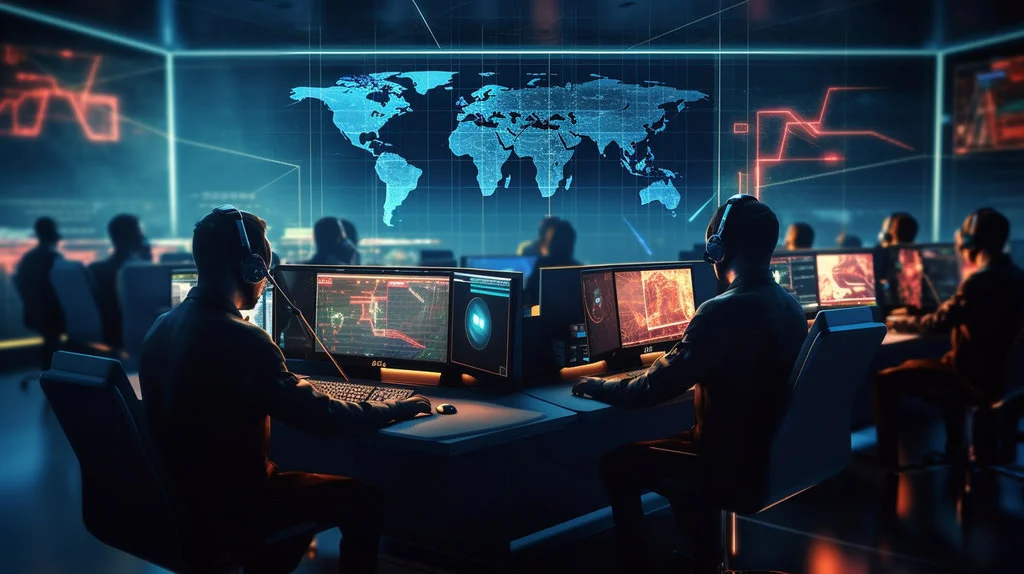5 Ways To Enhance Safety Through Technological Innovation
In an era where technology touches most aspects of people’s lives, it’s no surprise that it’s also becoming a vital player in enhancing safety. Imagine a world where technology isn’t about convenience or entertainment but a powerful tool to save countless lives. It might sound like science fiction, but people are already witnessing the incredible potential of cutting-edge innovations revolutionizing safety in ways you could never have thought possible.
Think of self-driving cars, zipping around without human mistakes or advanced medical imaging that spots diseases before they turn deadly. The world is at a point where technology is leaping beyond limits to keep everyone safe.

This article dives into five groundbreaking ways tech innovations are upping the safety game. Read on!
Autonomous Vehicles For Safer Roads

Imagine a world where distracted or drunk driving is a thing of the past. Self-driving cars, equipped with top-notch sensors like Light Detection and Ranging (LiDAR), radar, and cameras, are transforming how people get around.
These cars can see everything around them with pinpoint accuracy, crunching data on the fly about pedestrians, traffic lights, and other vehicles on the road. They also use smart algorithms to make split-second decisions quicker and reliably than humans can. This slashes the number of crashes caused by human mistakes.
In addition to these advancements, envision an integrated platform for comprehensive traffic management that works hand-in-hand with autonomous vehicles. This system can coordinate traffic flow, optimize signal timings, and manage congestion in real-time, further enhancing road safety and efficiency.
Sure, there are ethical dilemmas and technical hurdles to overcome, but the promise these vehicles hold for boosting road safety is enormous. As this tech gets better and wins over more people, the world is edging toward a future where accidents from human error are rare, making our streets safer for everyone.
Predictive Maintenance For Infrastructure
Predictive maintenance is all about getting ahead of the game, using data analytics and sensor tech to catch infrastructure hiccups before they turn into headaches. Picture bridges capable of predicting when repairs are necessary or power grids that can detect potential outages in advance. It’s like giving your infrastructure a sixth sense, with sensors embedded throughout, keeping tabs on stress, vibration, and temperature changes around the clock.
For instance, if a bridge’s sensors pick up odd responses to the weight of cars and trucks, it might be pointing to a structural issue that needs attention. Or, if power lines are showing hotspots or irregularities, it could signal an outage in the making.
By identifying these issues early, you can start repairs on time, dodging potential disasters and ensuring everyone stays safe. Predictive maintenance flips the script from reacting after the fact to proactively keeping things running smoothly. This reduces downtime and extends the life of infrastructures.
Smart Homes For Improved Security And Well-Being
Smart home technology is transforming living spaces into fortified sanctuaries. With remote access to security cameras, doors, and appliances, you can monitor your home from anywhere. Motion sensors raise instant alerts upon detecting unauthorized entry, while smart fire alarms provide early warnings, allowing you to respond swiftly.
But the benefits extend beyond security. Wearable health trackers seamlessly integrated with your smart home can monitor the vital signs of elderly residents or those with chronic conditions. If an emergency arises, timely intervention becomes possible, ensuring their safety and well-being.
For example, if an elderly parent experiences a concerning spike in blood pressure or falls, the smart home system can immediately notify emergency contacts or services. This empowers you to provide better care for your loved ones, even when you’re not physically present.
AI-Powered Emergency Response Systems
In the critical moments when every second counts, emergency response systems are harnessing the power of Artificial Intelligence (AI) to save lives. Advanced algorithms can rapidly analyze incoming calls, pinpointing the location of emergencies with unprecedented accuracy. This transcends language barriers through real-time translation software, ensuring clear communication during crises.
Consider a scenario where a caller is unable to articulate their location due to a language barrier or disorientation. AI can swiftly interpret the caller’s speech, triangulate their position using data from cell towers and GPS, and relay this information to dispatch. Within minutes, first responders are en route, guided by optimized dispatch patterns that leverage AI to allocate available resources intelligently, directing them to where they’re needed.
Additionally, AI’s predictive capabilities can identify potential emergencies before they escalate. By analyzing data on weather patterns, traffic conditions, and historical incident reports, AI can anticipate high-risk situations and proactively position resources, ensuring a rapid response when disaster strikes
Cybersecurity Innovations For A Connected World
In today’s world, where everything is online, top-tier cybersecurity is a necessity. As critical infrastructure, financial institutions, and personal information increasingly reside in the digital space, advancements in fields like encryption and intrusion detection systems are crucial for protecting sensitive data.
Beyond defense, these innovative solutions can also predict and prevent attacks. Machine learning algorithms can analyze countless data, discerning patterns that human analysts might miss and raising early warnings of potential breaches. This allows organizations to fortify their defenses before malicious actors can strike.
For instance, by studying past cyber attacks and their methods, AI can identify signatures or behavioral patterns that could indicate an impending assault. Armed with this intelligence, cyber security professionals can implement targeted countermeasures, staying one step ahead of evolving threats.
Conclusion
Clearly, the future holds incredible promises for leveraging technological innovation to enhance safety. Each of the discussed advancements demonstrates how technology can be a powerful ally in safeguarding human lives. As innovation and adaptation continue, the possibilities for creating a safer and more secure world are endless. However, it’s crucial to remember that technology is a tool, and its effectiveness depends on responsible development, ethical consideration, and equitable access.

